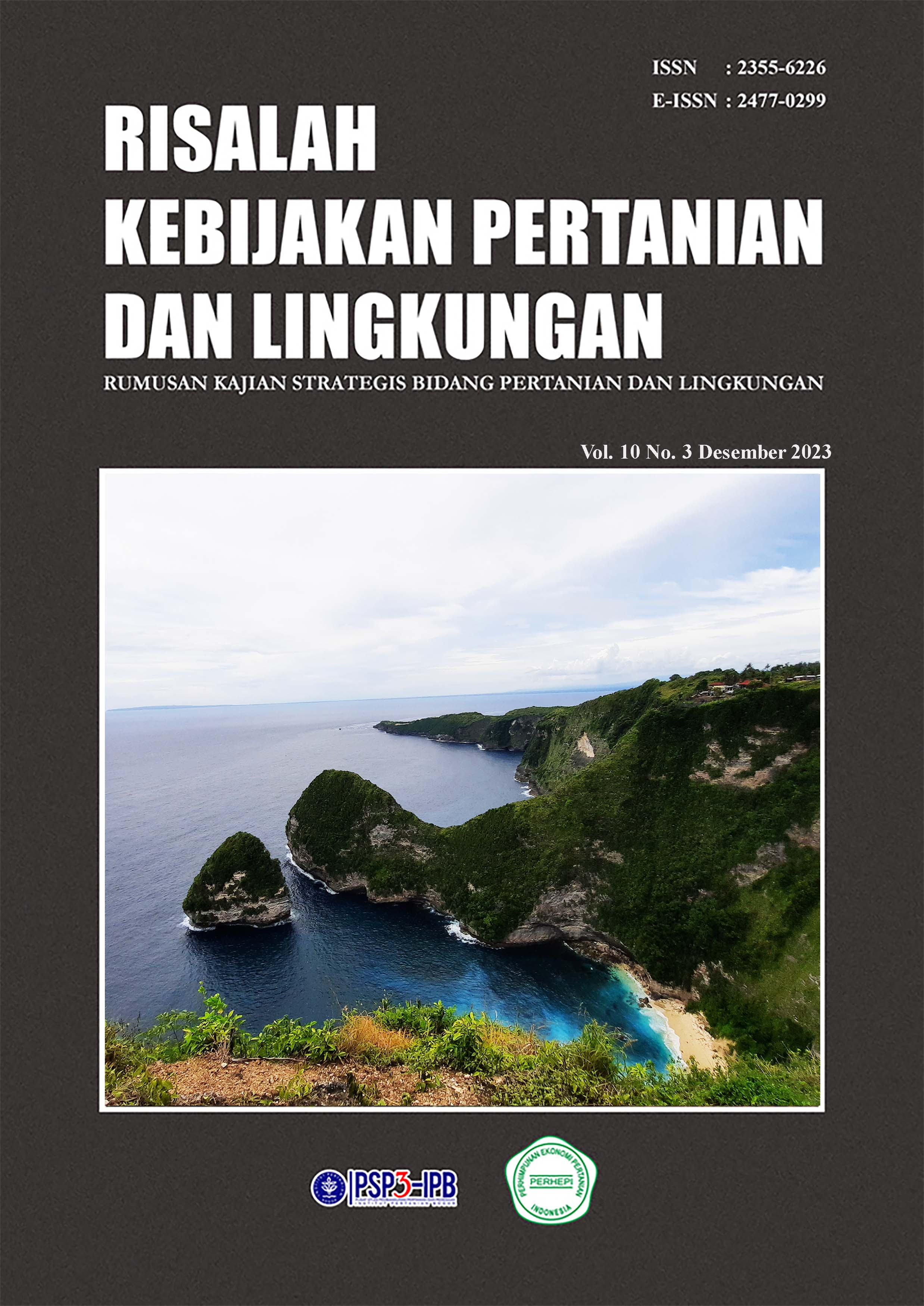TEKNOLOGI REKLAMASI LAHAN BEKAS TAMBANG NIKEL UNTUK MEMPERCEPAT KEBERHASILAN REKLAMASI
Abstrak
Nikel terbentuk melalui pelapukan batuan ultrabasa atau ultramafik yang berasal dari kerak samudra yang teralihkan ke permukaan kerak benua. Proses pembentukan ini memakan waktu jutaan tahun, dimulai ketika batuan ultramafik tersingkap di permukaan bumi. Penambangan nikel memainkan peran penting dalam industri baterai kendaraan listrik dan perekonomian di Indonesia, namun dampaknya terhadap lingkungan sering menghasilkan lahan bekas tambang dengan karakteristik unik yang sulit direklamasi. Lahan bekas tambang sering memiliki rasio Mg/Ca yang lebih tinggi dari satu. Selain itu, tanah di lahan bekas tambang nikel biasanya dangkal dan bersifat hidrofobik, menyebabkan kesulitan dalam menyerap air. Reklamasi lahan bekas tambang menjadi fokus utama untuk mengembalikan meningkatkan daya serap tanah terhadap air dan produktivitas lahan. Dengan pendekatan perbaikan sifat fisika, kimia, dan biologi, teknologi reklamasi mencakup metode pembuatan lubang tanam berukuran 60x60x60 cm, pengomposan bahan organik, dan penggunaan Super Absorbent Polymer (SAP) guna meningkatkan daya serap tanah terhadap air. Dalam konteks ini, teknologi reklamasi menjadi kunci untuk mempercepat keberhasilan reklamasi lahan bekas tambang nikel secara berkelanjutan dan mengoptimalkan pemanfaatan sumber daya tambang nikel di Indonesia.
##plugins.generic.paperbuzz.metrics##
Unduh
Referensi
Abidin, A., Zainal, G., Susanto, N.M.T., Sastra, Puspasari, T. 2018. Sintesis dan karakterisasi polimer superabsorban dari akrilamida. Jurnal Teknik Kimia Indonesia, 11(2), 84–100. https://doi.org/10.5614/jtki.2012.11.2.5.
Al-Jabari, M., Ghyadah, R.A., Alokely, R. 2019. Recovery of hydrogel from baby diaper wastes and its application for enhancing soil irrigation management. Journal of Environmental Management, 239, 255–61. https://doi.org/10.1016/j.jenvman.2019.03.087.
Allo, M.K 2016. Kondisi sifat fisik dan kimia tanah pada bekas tambang nikkel serta pengaruhnya terhadap pertumbuhan Trengguli dan Mahoni, Jurnal Hutan Tropis, 4 (2), 207-217. http://dx.doi.org/10.20527/jht.v4i2.3608.
Arif, I. 2018. Nikel Indonesia. Jakarta: Gramedia Pustaka Utama.
Associates, L. 1971. Laterit and Lateritic Soils and Other Problem Soils of Africa: Development of Engineering Standards and Criteria for the Usage of Laterite, Lateritic Soils, and Other Problem Soils in Connection with the Construction of Roads, Highways, and Airfields.
Astuti, W., Zulhan, Z., Shofi, A., Isnugroho, K., Nurjaman, F., Prasetyo, E. 2012. Pembuatan Nickel Pig Iron (NPI) Dari Bijih Nikel Laterit Indonesia Menggunakan Mini Blast Furnace. Dalam Karmiadji, D.W., Notosudjono, D., Nurzal, E.R., Syafarudin, Djarot, I., Wicaksono, H., Sauf, A. Prosiding Seminar Insentif Riset SINas (INSINas 2012) (hlm. 66-71). Kementerian Riset dan Teknologi.
[BPS] Badan Pusat Statistik. 2023. Buletin statistik perdagangan luar negeri ekspor menurut kelompok komoditi dan negara, Juli 2023. https://www.bps.go.id/publication/2023/09/29/c988746de8f0b5c8328f0652/buletin-statistik-perdagangan-luar-negeri-ekspor-menurut-kelompok-komoditi-dan-negara-juli-2023.html.
Chaudhry, A.H., Nayab, S., Hussain, S.B., Ali, M., Pan, Z. 2021. Current understandings on magnesium deficiency and future outlooks for sustainable agriculture. International Journal of Molecular Sciences, 22(4), 1819. https://doi.org/10.3390/ijms22041819.
Dere, A.L., Stehouwer, R.C., Aboukila, E., McDonald, K.E. 2012. Nutrient leaching and soil retention in mined land reclaimed with stabilized manure. Journal of Environmental Quality, 41(6), 2001–2008. https://doi.org/10.2134/jeq2012.0036.
Dewanti, D.P., Ma’rufatin, A., Nugroho, R. 2019. Uji kapasitas absorpsi air oleh selulosa dari tandan sawit sebagai bahan Super Absorbent Polymer (SAP) pada popok sekali pakai. Jurnal Rekayasa Lingkungan, 12(2), 99-106. https://doi.org/10.29122/jrl.v12i2.4018.
Dipatunggoro, G. 2010. Pemetaan geologi nikel laterit daerah SP Unit 25 dan sekitarnya Kecamatan Toili Barat, Kabupaten Banggai, Propinsi Sulawesi Tengah. Bulletin of Scientific Contribution: GEOLOGY, 8(3), 166-172. https://doi.org/10.24198/bsc.
Drakel, A., Arifin, H.S., Mansur, I., Sundawati, L. 2021. Analysis of soil fertility on revegetated land after nickel mining in Tanjung Buli, East Halmahera. Agrikan: Jurnal Agribisnis Perikanan, 14(1), 125–134. https://doi.org/10.29239/j.agrikan.14.1.125-134.
Faiz, A.M., Prijono, S. 2021. Perbedaan kemampuan tanah dalam menahan air pada berbagai kelerengan lahan kopi di daerah Sumbermanjing Wetan, Kabupaten Malang. Jurnal Tanah dan Sumberdaya Lahan, 8(2), 481–491. https://doi.org/10.21776/ub.jtsl.2021.008.2.19.
Gairola, S.U., Bahuguna, R., Bhatt, S.S. 2023. Native plant species: A tool for restoration of mined lands. Journal of Soil Science and Plant Nutrition, 23(2), 1438–1448. https://doi.org/10.1007/s42729-023-01181-y.
Hamsah, M. 2012. Rencana Reklamasi Dengan Penataan Lahan Pada Lahan Bekas Penambangan Tanah Liat di PT. Holcim Indonesia Tbk, Cilacap, Jawa Tengah. Tesis. UPN “Veteran” Yogyakarta: Yogyakarta.
Hassanah, N.F. 2021. Kajian yuridis perjanjian perdagangan internasional terkait aturan pembatasan dan larangan ekspor oleh World Trade Organization (WTO) (Studi perjanjian antara Indonesia dan Uni Eropa). Jurnal Ilmiah Mahasiswa Hukum, 1(4), 1-12. https://jurnalmahasiswa.umsu.ac.id/index.php/jimhum/article/view/925.
Hirfan, Hirfan. 2018. Strategi reklamasi lahan pasca tambang. PENA TEKNIK: Jurnal Ilmiah Ilmu-Ilmu Teknik, 1(1), 101–108. https://doi.org/10.51557/pt_jiit.v1i1.48.
Iman, N., Wibowo, A. 2015. Metode putaran, transplantasi tumbuhan lokal untuk meningkatkan keberhasilan reklamasi. Temu Profesi Antam, October 2015. Bogor.
Karamoy, T.L., Kumolontang, W., Rondonuwu, J. 2015. Pemberian kompos pada tanah bekas tambang dengan indikator tanaman sawi (Brassica chinensis L). EUGENIA, 21 (2). https://doi.org/10.35791/eug.21.2.2015.9711.
Kementerian ESDM. 2022. Laporan kinerja Kementerian Energi dan Sumberdaya Mineral Tahun Anggaran 2022. https://www.esdm.go.id/assets/media/content/content-laporan-kinerja-kementerian-esdm-tahun-2022.pdf.
Kementerian ESDM. 2023. Minerba One Data Indonesia (MODI). Oktober 2023. https://modi.esdm.go.id/ filter?tahun=2022.
Kementerian Perindustrian. 2023. Kemenperin: hilirisasi nikel di Indonesia, Kemenperin buka suara. Agustus 2023. https://kemenperin.go.id/artikel/24251/Hilirisasi-Nikel-di-Indonesia,-Kemenperin-Buka-Suara.
Khoo, S.C., Phang X.Y., Ng C.M, Lim K.L., Lam, S.S., Ma, N.L. 2019. Recent technologies for treatment and recycling of used disposable baby diapers. Process Safety and Environmental Protection, 123, 116–29. https://doi.org/10.1016/j.psep.2018.12.016.
Kurniadi, A., Rosana, M.F., Yuningsih, E.T., Pambudi, L. 2017. Karakteristik batuan asal pembentukan endapan nikel laterit di daerah Madang dan Serakaman Tengah. Geoscience Journal, 1(2), 149–163. https://jurnal.unpad.ac.id/geoscience/article/view/14316.
Maghfiroh, C.N., Hartanti, D.A.S., Puspaningrum, Y., Zuhria, S.A., Khiftiyah, A.M., Chumaidi, M. 2022. Identifikasi karakteristik tanah pertanian di Desa Banjarsari Kecamatan Bandarkedungmulyo Kabupaten Jombang. Exact Papers in Compilation (EPiC), 4(2), 551–556. https://doi.org/10.32764/epic.v4i2.767.
Mosyaftiani, A., Kaswanto, R.L., Arifin, H.S. 2018. Potensi tumbuhan liar di sempadan terbangun Sungai Ciliwung di Kota Bogor sebagai upaya restorasi ekosistem sungai. Risalah Kebijakan Pertanian dan Lingkungan, 5(1), 1-13. https://doi.org/10.29244/jkebijakan.v5i1.29781.
Mulyanto, B., Suwardi. 2006. Prospek zeolit sebagai bahan penjerap dalam remediasi lahan bekas tambang. Seminar Nasional PKRLT Fakultas Pertanian UGM, Sabtu 11 Feb 2006. Yogyakarta.
Mustajab, R. 2022. Tambang nikel Indonesia Tersebar di tujuh provinsi pada 2022. https://dataindonesia.id/energi-sda/detail/tambang-nikel-indonesia-tersebar-di-tujuh-provinsi-pada-2022 [4 Nov 2022.].
Prasetyo, F.D., Triasti, R.D., Ayuningtyas, E. 2021. Pemanfaatan limbah popok bayi (diapers) sebagai media tanam. Jurnal Rekayasa Lingkungan, 21(1), https://doi.org/10.37412/jrl.v21i1.91.
Prastiyo, Y.B., Kaswanto, R.L. dan Arifin, H.S. 2020. Plants diversity of agroforestry system in Ciliwung Riparian Landscape, Bogor Municipality. IOP Conference Series: Earth and Environmental Science, 477(1), 012024. https://doi.org/10.1088/1755-1315/477/1/012024
Rahadian, R., Hadi, M., Tarwotjo, U., Larasati, W., Husna, N.L. 2022. Kondisi tanah sebelum dan sesudah ditambang di area galian pasir dan batu Rowosari Semarang berdasarkan struktur komunitas mikroartropoda dan indeks QBS-ar. NICHE Journal of Tropical Biology, 4(2), 40–45. https://doi.org/10.14710/niche.4.2.40-45.
Ramdani, N., Mustam, M., Harun, A.P., Azis, H., Setiawan, I.M.A. 2021. Peran Polimer Super Absorben pada popok bayi dalam mengontrol kelembapan tanah. EduMatSains : Jurnal Pendidikan, Matematika dan Sains, 6(1), 91–100. https://doi.org/10.33541/edumatsains.v6i1.2991.
Sarifuddin, Rauf, A., Dewantari, Y. 2021. The Application of hydrogel (Super Absorbent Polymer) and chicken manure fertilizer to increase pH, N-Total, C-Organic and soil water content in entisol. IOP Conference Series: Earth and Environmental Science, 782(4), 042024. https://doi.org/10.1088/1755-1315/782/4/042024.
Shiddiq. 2023. Lonjakan nikel matte 300 persen dan perkembangan smelter Indonesia. https://nikel.co.id/2023/08/21/lonjakan-nikel-matte-300-persen-dan-perkembangan-smelter-indonesia/ [21 Ags 2023].
Subhan, E., Salampak, S., Embang, S.E., Masliani, M. 2019. Analisis tingkat kesuburan tanah lahan bekas penambangan batubara PT. Senamas Energindo Mineral Kabupaten Barito Timur Provinsi Kalimantan Tengah. Media Ilmiah Teknik Lingkungan (MITL), 4(2), 34–40. https://doi.org/10.33084/mitl.v4i2.1025.
Suwardi. 2019. Utilization and improvement of marginal soils for agricultural development in Indonesia. IOP Conference Series: Earth and Environmental Science, 383(1), 012047. https://doi.org/10.1088/1755-1315/383/1/012047.
Suwardi. 2021. The role of humic substances to improve degraded soils for increasing crops production. IOP Conference Series: Earth and Environmental Science, 694(1), 012005. https://doi.org/10.1088/1755-1315/694/1/012005.
Tuheteru, F.D., Arif, A., Rajab, M.F. 2017. Potential of nickel (Ni) phytoremediation of adaptive species on revegetation land, PT. Vale Indonesia (Tbk). Pomalaa Site Kolaka Regency. Jurnal Wasian ,4 (2): 89-96. https://doi.org/10.20886/jwas.v4i2.2855.
[USGS] U.S. Geological Survey. 2023. Mineral Commodity Summaries | Nickel Statistics and Information. Amerika: U.S. Geological Survey. https://pubs.usgs.gov/periodicals/mcs2023/mcs2023-nickel.pdf.
Widiatmaka, W., Suwarno, S., Kusmaryandi, N. 2010. Karakteristik pedologi dan pengelolaan revegetasi lahan bekas tambang nikel: Studi kasus lahan bekas tambang nikel Pomalaa, Sulawesi Tenggara. Jurnal Ilmu Tanah dan Lingkungan, 12(2), 1–10. https://doi.org/10.29244/jitl.12.2.1-10.
##submission.copyrightStatement##
##submission.license.cc.by4.footer##PUBLICATION ETHICS
Jurnal Risalah Kebijakan Pembangunan Pertanian dan Lingkungan (JRKPL) is a peer-reviewed journal publishing original research to develop a coherent and respected network of landscape architecture knowledge. JRKPL committed to upholding the highest standards of publication ethics that clarifies ethical behavior of all parties involved in publishing a scientific article in JRKPL.
As publisher of JRKPL, PSP3-LPPM IPB and PERHEPI takes its duties of guardianship all stages of publishing process and we recognize our ethical and other responsibilities.
Duties of Authors
An author should not publish manuscripts describing essentially the same research in more than one journal or primary publication. Submitting the same manuscript to more than one journal is unacceptable and constitutes unethical publishing behavior. In general, an author should not submit for consideration in another journal a previously published paper.
Authorship should be limited to those who have made a significant contribution to the manuscript and should be listed as co-authors. Where there are others who have participated in certain substantive aspects of the research project, they should be acknowledged as contributors. The corresponding author should ensure that all co-authors have seen and approved the final version of the paper and have agreed to its submission for publication.
The authors should ensure that they have written entirely original works, and if the authors have used the work and/or words of others, that this has been appropriately cited or quoted. Plagiarism are include passing off another paper as the author own paper, copying or paraphrasing substantial parts of another paper (without attribution) and claiming results from research conducted by others. Plagiarism constitutes unethical publishing behavior and is unacceptable. Plagiarism detected works will be banned for further publication procedure.
The authors acknowledge that they have disclosed all and any actual or potential conflicts of interest with their work or partial benefits associated with it. All sources of financial support for the project should be disclosed. Potential conflicts of interest should be disclosed at the earliest stage possible.
Duties of the Editorial Board
Review Process
JRKPL is committed to objective and fair double-blind peer-review to prevent any actual or potential conflict of interests between the editorial and review personnel and the reviewed material. JRKPL chooses reviewers based on their expertise (whose most closely matches the topic of the paper). At least 2 reviewers are invited to evaluate a manuscript. In cases of controversy or disagreement regarding the merits of the work, an additional review will be solicited. The JRKPL editor mediates all interaction between authors and reviewers, and the review results owned by JRKPL.
Publication Decisions
The editor of a peer-reviewed JRKPL is responsible for deciding which of the articles submitted to the journal should be published. The validation of the work in question and its importance to researchers and readers must always drive such decisions. The final decision on article acceptance based on reviewer's opinions, suggestions, and comments. The editor may confer with other editors or reviewers in making this decision.
Fair Play
JRKPL evaluates manuscripts only based on the intellectual content. No race, gender, sexual orientation, religious belief, ethnic origin, citizenship, or political philosophies of the authors are considered in the evaluation process.
Confidentiality
JRKPL assure the confidentially of the manuscripts, actors, and other related information on the publishing process. Only corresponding author, reviewers, potential reviewers, other editorial advisers, and the publisher are allows for the information.
Disclosure
Unpublished materials disclosed in a submitted manuscript must not be used in an editor's own research without the express written consent of the author. Privileged information or ideas obtained through peer review must be kept confidential and not used for personal advantage.
Duties of reviewers
(1) Objectivity: Reviewer should provide written and unbiased feedback to the authors, personal criticism of the author is inappropriate. Reviewer comments should be clearly with supporting arguments indicating whether the writing is concise and relevant
(2) Expertise: Reviewer who feels unqualified to review the research reported in a manuscript or knows that its prompt review will be impossible should notify the editor and excuse himself from the review process.
(3) Acknowledgement of sources: Reviewer suggest relevant published work that has not been cited by the authors to improve the quality of the manuscript,
(4) Confidentiality: Reviewer should maintain the confidentiality of the review process. Privileged information or ideas obtained through peer review must be kept confidential and not used for personal advantage.
(5) Disclosure and conflict of interest: Unpublished materials disclosed in a submitted manuscript must not be used in a reviewer own research without the express written consent of the author. Reviewers should not consider manuscripts in which they have conflicts of interest resulting from competitive, collaborative, or other relationships or connections with any of the authors, companies, or institutions connected to the papers.






















